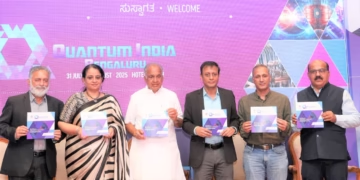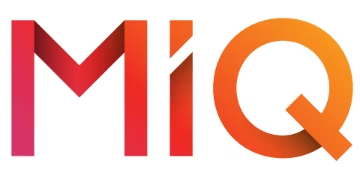- Record-breaking 57% increase in global deal values and 24% increase in global deal volumes from 2020 to 2021
- Private equity (PE) ended 2021 with a record US$2.3tn in “dry powder”, 14% higher than at the start of the year – boosted by record fundraising and highlighting that there is plenty more capital for M&A to come in 2022
- Portfolio reviews are triggering a wave of divestitures across industries as corporate dealmakers seek to reinvest and optimise their assets for growth
- Growing macroeconomic and regulatory headwinds may temper dealmaking in the year ahead
London, 25 January 2022 – After registering unparalleled growth in deal values and volumes in 2021, a strong deals pipeline, the availability of abundant capital, and an ongoing intense demand for digital and data-driven assets point to another supercharged year for M&A in 2022, according to PwC’s Global M&A Industry Trends: 2022 Outlook.
The analysis examines current global deals activity and incorporates insights from PwC’s deals industry specialists to identify the key trends driving M&A volumes and valuation multiples.
2021 saw a record year for M&A in both volume and value – by a long shot. The number of announced deals exceeded 62,000 globally in 2021, up an unprecedented 24% from 2020. Publicly disclosed deal values reached all-time highs of US$5.1 trillion – including 130 megadeals with a deal value of US$5 billion or more – a whopping 57% higher than in 2020 and smashing the previous record of US$4.2 trillion set in 2007.
Brian Levy, Global Deals Industries Leader, Partner, PwC US, said: “After a record year for M&A, everyone’s asking what’s next? Dealmaking will likely remain robust in 2022, with fierce competition among corporates, PE and SPACs, but it’s feasible that the top may come off the market, given increasing macroeconomic and regulatory headwinds.”
While optimism remains high for a strong 2022, headwinds from higher interest rates, rising inflation, increased taxes and greater regulation could pose structural or financial hurdles for completing deals in 2022. We are already seeing greater volatility in financial markets, further disruptions in the global supply chains, and increased levels of fiscal debt, as shockwaves from the pandemic continue to play out globally. As we’ve already learned from the pandemic, dealmakers should stay alert to how the new accelerated pace of change can bring these factors – or others – into play earlier and with greater impact.
Private equity is flexing its fundraising power and increasing its market share of deals activity
PE continues to capture more, and larger, deals. Almost 40% of deals in 2021 involved a PE fund, up from just over a quarter for the past five years, and PE firms are doing bigger deals, accounting for 45% of total deal value in 2021, compared to 30% over the past five years. Heading into 2022, PE has ramped up its deal capacity, raising record levels of “dry powder” capital. Global PE capital ended 2021 at US$2.3 trillion, 14% higher than the start of the year – providing plenty of fuel for M&A activity in 2022. While funding is abundant, there will be increasing pressures on PE to find ways to create value in an environment of rising interest rates, higher multiples and ESG pressures.
We expect special purpose acquisition companies (SPACs) will continue to play a significant role in 2022 after a resurgence of SPAC IPOs in late 2021 added to the capital available for M&A. With almost 500 SPACs yet to announce a merger, the short time frame (typically two years) in which they need to complete a deal will result in SPACs competing with PE and corporate dealmakers for targets in 2022 and 2023.
This fierce competition among corporates, PE and SPACs will keep multiples high for sought-after assets – making having a robust plan for M&A value creation more important than ever.
Portfolio reviews are driving divestiture and acquisition activity across industries
On the corporate side, we expect the strategic shift to digital, innovative and new disruptive business models to continue to drive M&A decision-making. With market conditions that demand a greater value creation mindset across global boardrooms, CEOs will also likely focus on divestitures, as they rebalance their portfolios for longer term growth and profitability. Environmental, social and governance (ESG) factors will also increasingly influence M&A strategies throughout 2022.
These trends are playing out across key industries:
- Consumer markets: Consumer preferences will continue to serve as a catalyst for M&A activity in 2022 as corporates and PE remake their portfolios to capitalize on trends such as ‘conscious consumerism’ which are creating demand for new products and services and entirely new business models.
- Energy, utilities and resources (EU&R): ESG is driving strategies across the industry. M&A will be used to rebalance portfolios and pursue value creation opportunities in ESG growth areas such as renewables, carbon capture, battery storage, hydrogen, transmission infrastructure and other clean technologies.
- Financial services: Competition for strategic market advantage continues to fuel M&A, with activity led by deals for technology and innovation. Expect continued portfolio optimisation to lead to divestiture activity along with capability-driven deals as companies seek to leverage technology and drive efficiencies. Distressed assets in the banking and insurance sectors could produce a wave of deals.
- Health industries: Pharma companies are seeking to optimise their portfolios for growth through deals that provide access to new technologies such as mRNA and cell and gene therapy. In healthcare services, speciality care platforms, telehealth, healthtech and data and analytics companies are attracting investor interest.
- Industrial manufacturing and automotive: Strategic portfolio reviews and ESG are driving M&A activity – in particular, deals that accelerate digital transformation such as electric and autonomous vehicles, batteries and charging technologies, additive manufacturing, next-generation materials, and production with non-fossil energy sources.
- Technology, media and telecommunications: As traditional industries face high levels of disruption and innovative technologies propel into the mainstream faster than anticipated, the technology sector will continue to see unmatched levels of deals activity—and deal values—as companies from across all industries seek to acquire key technology or digital capabilities.
Brian Levy added: “M&A activity in 2021 was fueled in large measure by intense demand for digital and data-driven assets, and we believe technology adaptation will remain a consistent pressure across all industries in 2022. Companies will also seek to maintain competitive advantage and reinvest using divestitures of under-performing businesses. At the same time, dealmakers must pay close attention to potential deal disruptors such as financial market volatility and macroeconomic headwinds. The need to have robust plans for M&A value creation will be extremely important this year.”










































